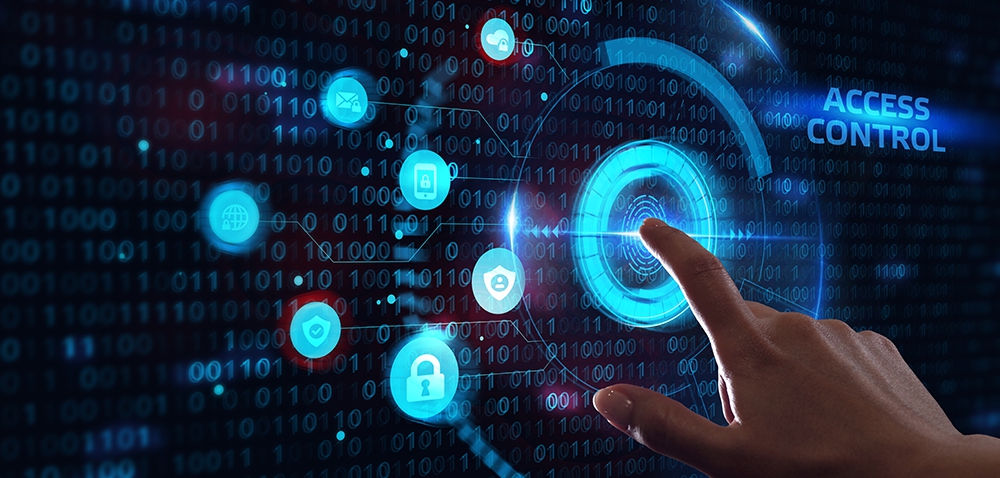Converged technology in the modern world of entry

By Pierre Bourgeix
Updated 1:07 PM CDT, Mon June 7, 2021

.jpg) YARMOUTH, Maine—Over the past year we have seen a dramatic shift in how organizations treat the concept of entry. No longer is it a passing thought or something relegated to a Division 28 specification that was an architectural consideration. Today, entry has become a hot topic and one that has many potential land mines associated with it, including potential liability.
YARMOUTH, Maine—Over the past year we have seen a dramatic shift in how organizations treat the concept of entry. No longer is it a passing thought or something relegated to a Division 28 specification that was an architectural consideration. Today, entry has become a hot topic and one that has many potential land mines associated with it, including potential liability.
Many consultants and design engineers have been asked to help establish a new line in the sand at the entry, and it is not just a door. The consensus is that entry is a multi-dimensional conversation that incorporates four primary elements – people, process, technology and culture.
Before this new entry enlightenment, the door was simply a way to enhance the beauty of a building's entrance, or a practical way to get in and out. Well, that is not the case anymore. Although these elements are still critical, they now are incorporated with technology that are part of a process of entry that now deals with the aftermath of the COVID-19 experience. Some will say this is just a passing fad and most people will forget all about the miserable year and a half that most of us globally had to suffer through, and many are still today. Unfortunately, though, these skeptics have something coming to them.
PROCESS OF ENTRY
The push toward the advancement of metrics and information at the edge with new technology has already made its way to the entry, and many end users are seeing advantages in incorporating this into the process of entry.
I have mentioned “the process of entry,” and its definition is straightforward but may not be so obvious to those who are involved in the security industry. The process of entry incorporates key elements that define the ability to gain metrics and data that enable the ability to safely and securely allow people to gain entry and egress from a facility, while ensuring that the public is safe from any potential health-related or criminal activity from affecting others. There are two criteria that must be understood, especially surrounding technology and process, and they are tied to Prevention and Detection solutions.
Inherently a door was always something that would prevent an activity from happening. Unfortunately, we clouded that subject since most organizations and public facilities have gone to a more open environment,making the door more of a slight impediment rather than a prevention tool. This brings us to detection, and this is where everything changes.
CONVERGED WORLD OF DETECTION
The world of detection has become a key element in the post COVID-19 pandemic world. The use of heat sensing for fever detection, facial recognition, mobile credentials, biometric credentials, IoT intelligent sensors, turnstiles with all the above technologies, doors that sense piggy backing and tailgating and much, much more have and will become a multi-billion-dollar industry in the next five years. Tied to this onslaught of technology is the ability to digest the metadata and information to create modeling and establish policies that tie governance to the process of entry.
Organizations globally are fundamentally building process and policies into their safety, operational and security programs. Just five years ago this would have never happened since most organizations believed that all they needed was an access control card a reader and a few doors or turnstiles to let the employee population in. Now, every employee is a part of the process of entry and must be a party of the overall governance of entry.
I understand that most who work in the security industry understand the ad-hoc nature of adapting technology to the entry and see each element of these technologies as only parts to a sum. However, be assured that global organizations are not thinking of this as bandages but standards that they are setting for the future of entry into not only the physical domain of entry but also the logical and operational.
The merging of the entry into a more converged process that incorporates all facets of a business model is here and is going to become the future of entry in the modern world. Most organizations are already using metrics from this to establish business operational practices. They are adapting data from the edge to help manage employee safety, security and productivity, as well as enhancing operational technology systems such as lighting controls, HVAC, etc.
Yes, the entry is no longer just a lock or reader on a door that opens with a key or a card. Today the entry is the first step to defining how a business can become more efficient, safe, secure and compliant.
Pierre Bourgeix is Chief Technology Officer and Founder of security consulting firm ESI Convergent, LLC., which recently combined forces with Butchko, Inc. to jointly bring converged physical-cyber security solutions to solve today’s complex challenges.
Comments